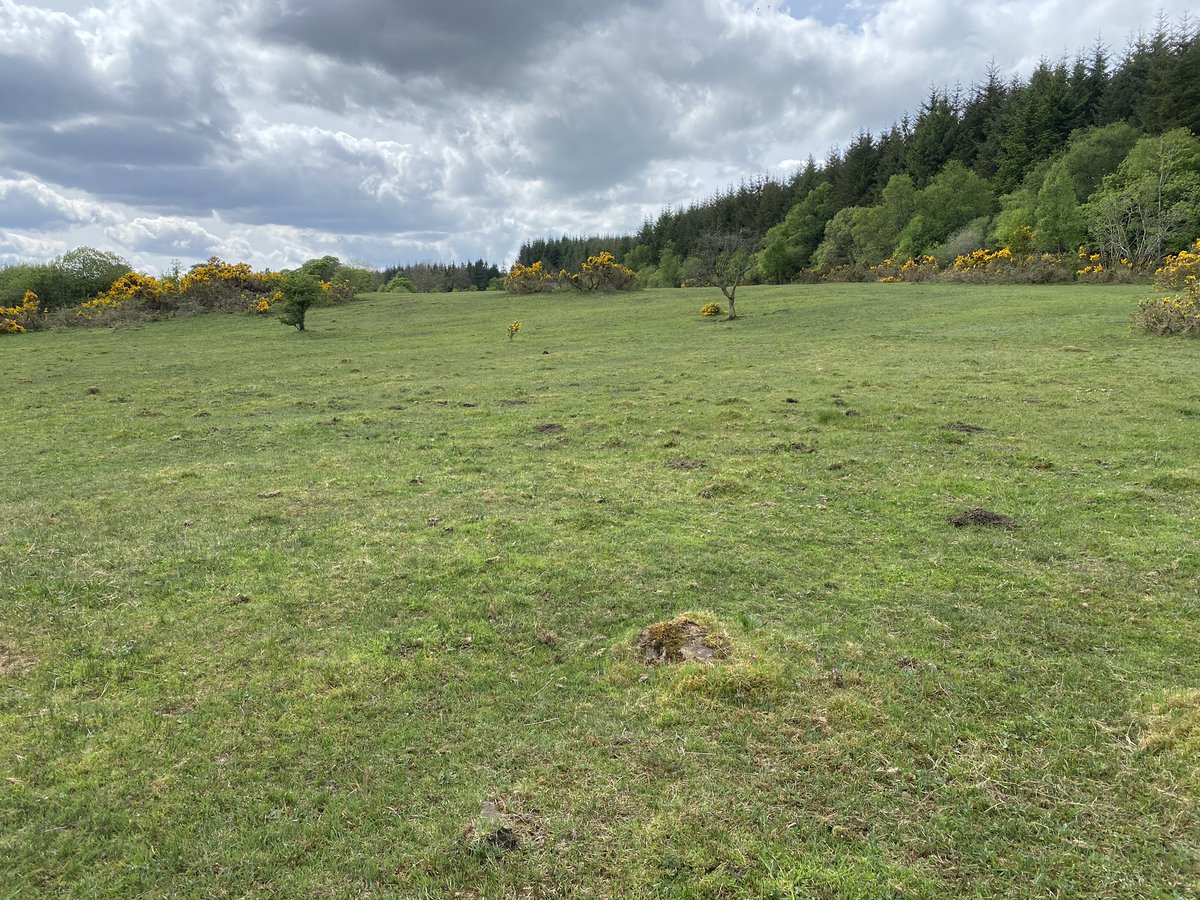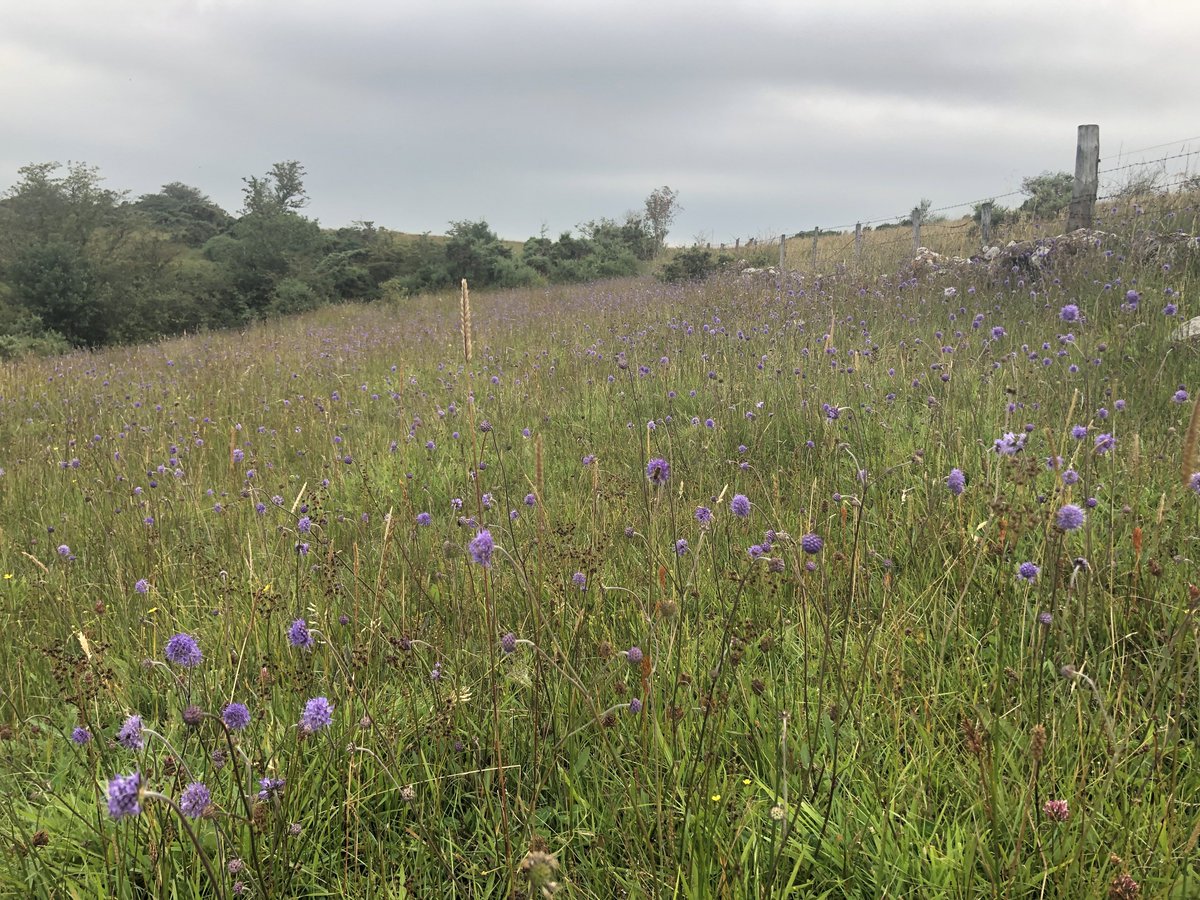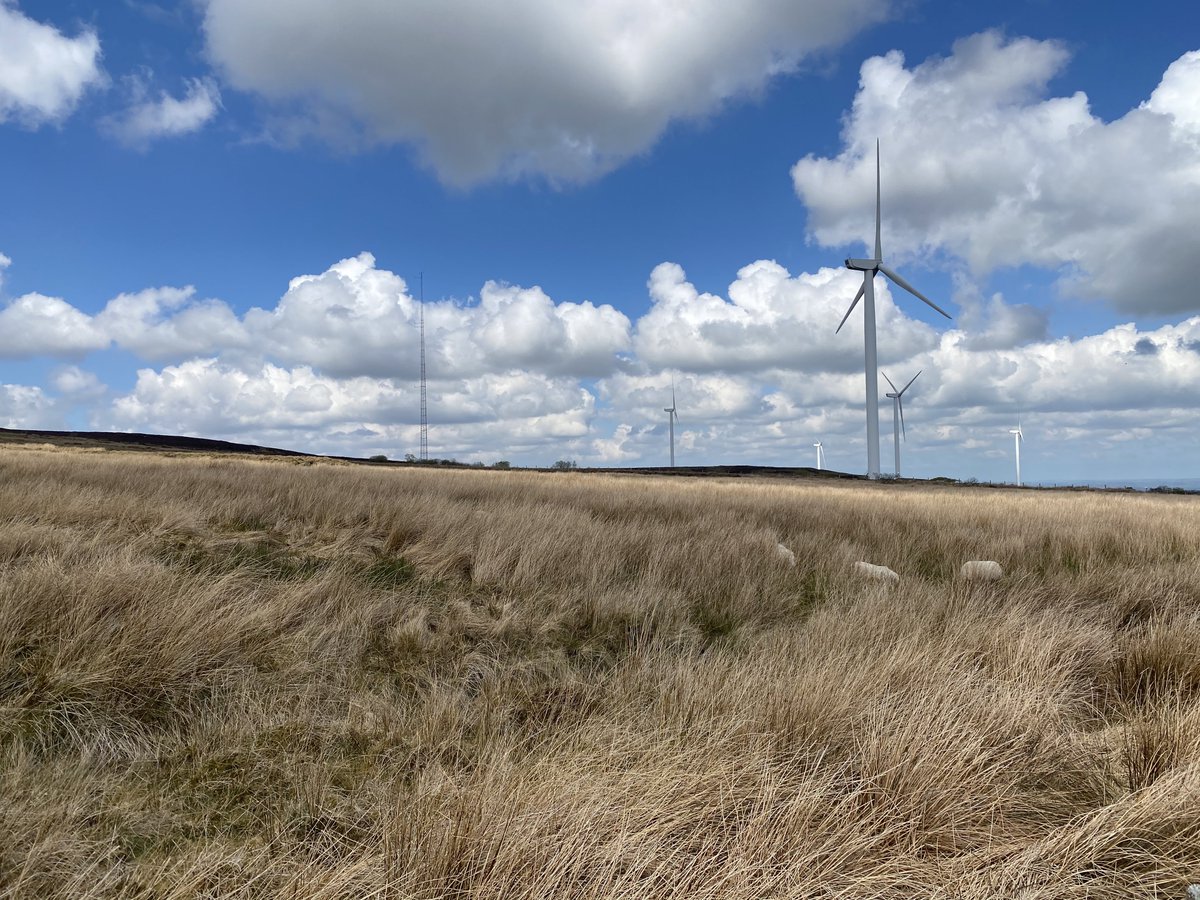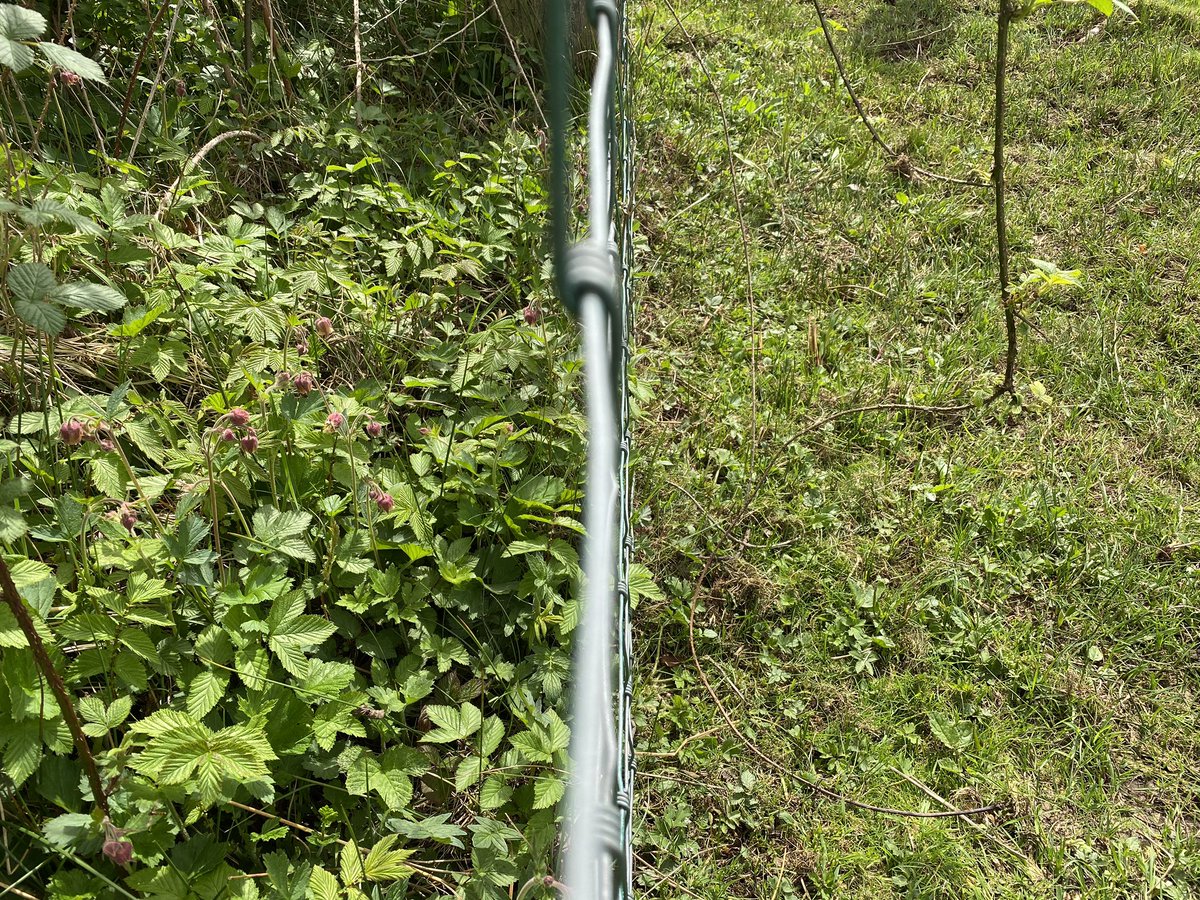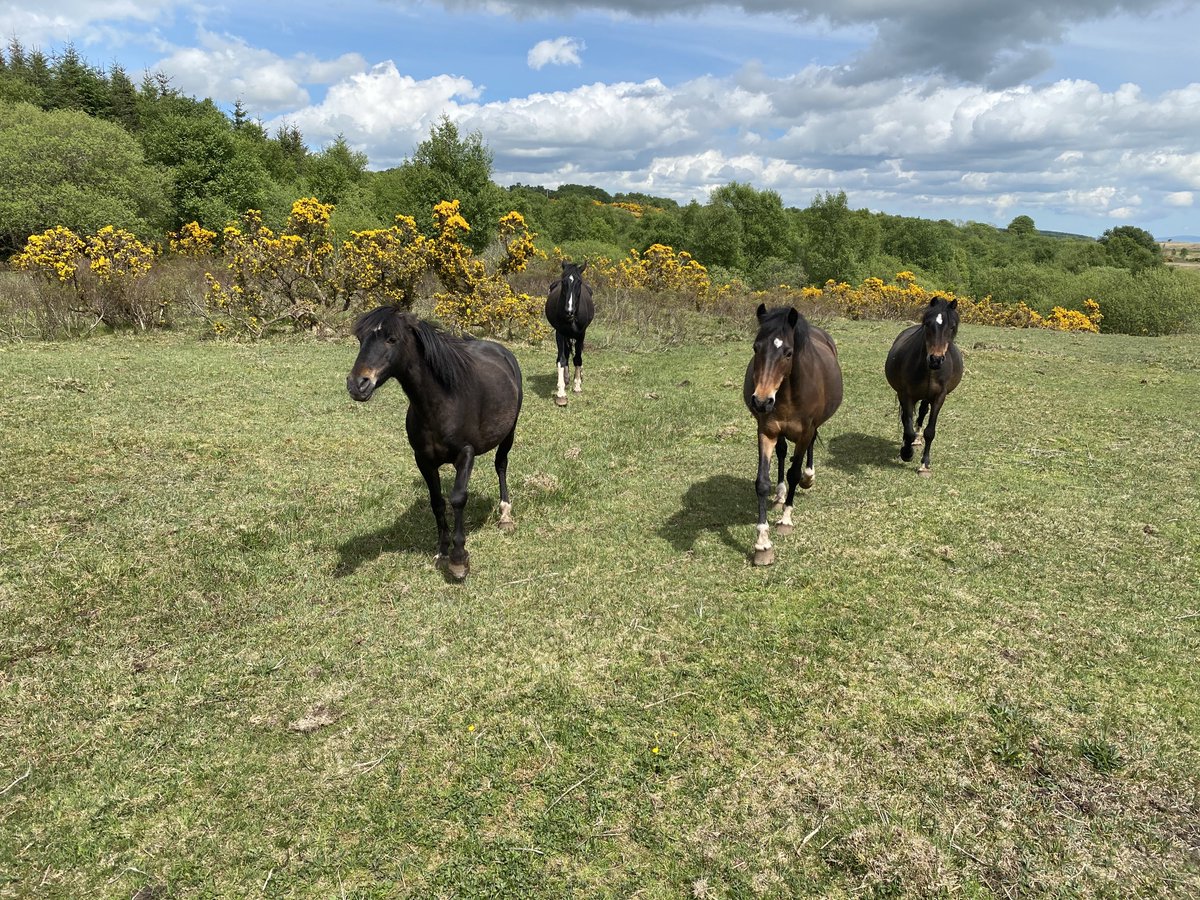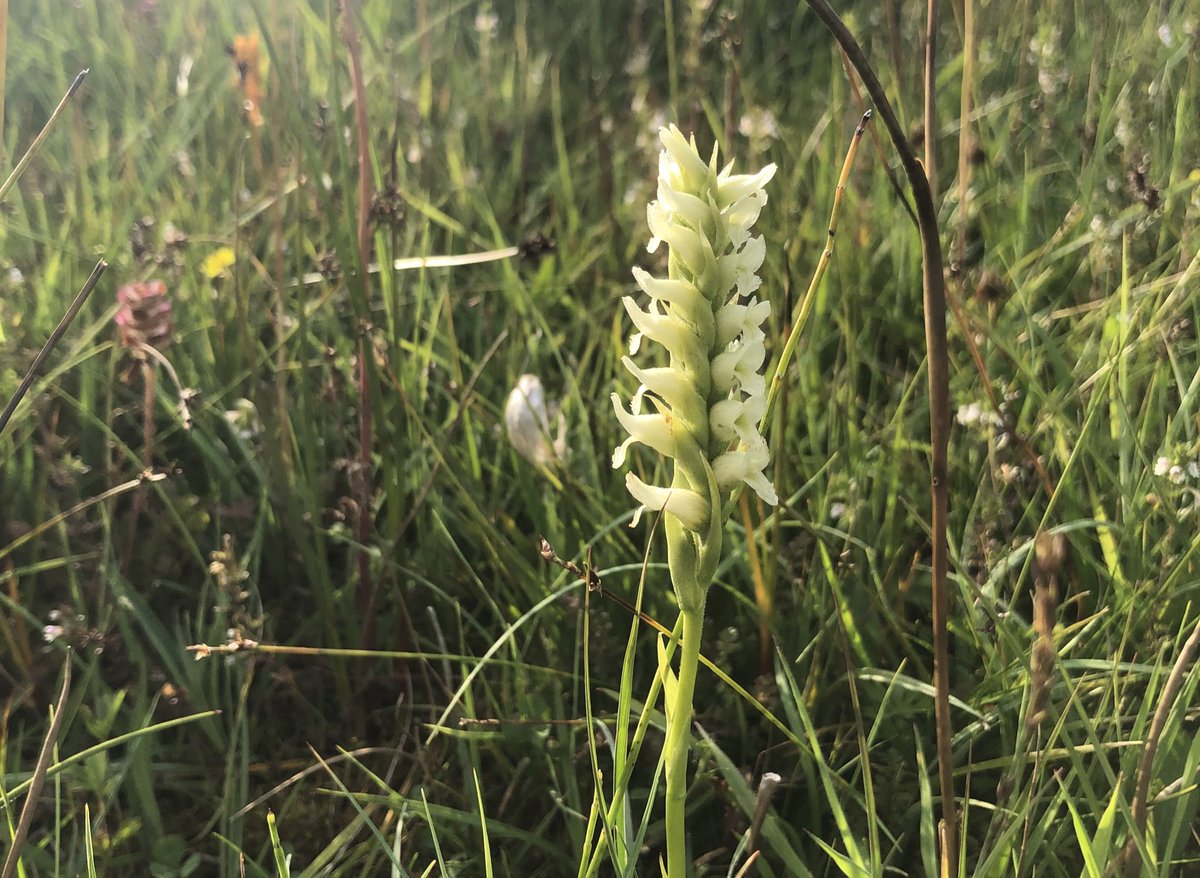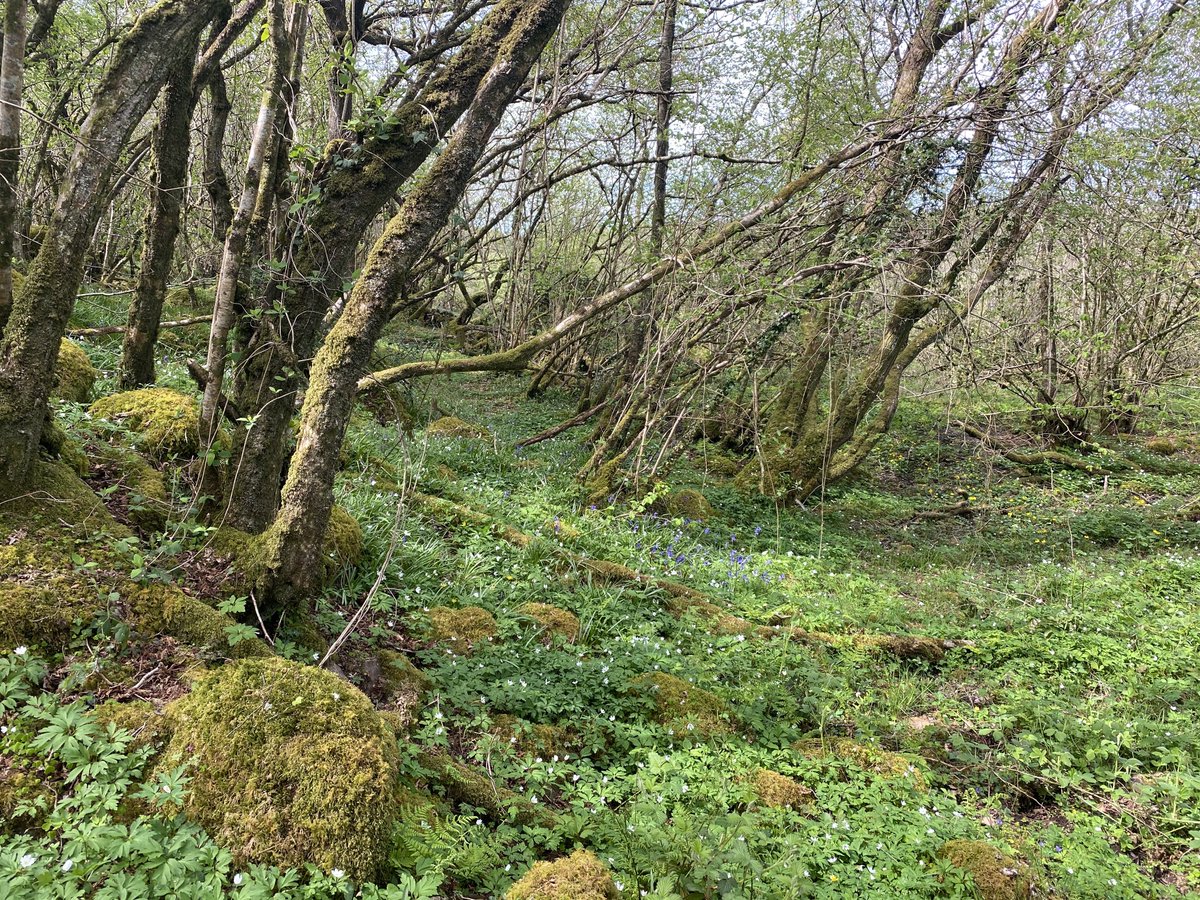this heavily grazed field supports some of Ireland& #39;s most threatened species, including Irish lady& #39;s tresses orchids, marsh fritillary butterflies and narrow bordered bee hawkmoths. but why this field? (thread)
2 reasons:
-its ancient upland pasture that& #39;s never been heavily fertilised or reseeded
-its grazed by horses instead of sheep
-its ancient upland pasture that& #39;s never been heavily fertilised or reseeded
-its grazed by horses instead of sheep
we& #39;re conditioned to thinking of fertiliser as an inherently good thing, but too much of it is ecologically disastrous- it pollutes soil, killing specialised fungi and lowering plant diversity
the threatened species in this pasture seem perfectly adapted to horse grazing. horses preferentially eat the rushes and molinia that usually become dominant, whilst avoiding key herbs- including devil& #39;s bit scabious (the larval food plant of the marsh frit and NB bee hawkmoth)
this is the opposite to how sheep and deer graze. they preferentially eat the herbs, whilst avoiding the rushes and molinia- making the habitat unsuitable for most threatened species that live in upland pasture
so horse (and cattle) grazing in the uplands generally creates wildflower rich grassland, whilst sheep and deer grazing generally removes wildflowers. if we& #39;re going to graze the uplands, its ecologically much better to do so with horses and cattle. this NB bee hawkmoth agrees  https://abs.twimg.com/emoji/v2/... draggable="false" alt="😍" title="Smiling face with heart-shaped eyes" aria-label="Emoji: Smiling face with heart-shaped eyes">
https://abs.twimg.com/emoji/v2/... draggable="false" alt="😍" title="Smiling face with heart-shaped eyes" aria-label="Emoji: Smiling face with heart-shaped eyes">
what happens if you don& #39;t graze upland pasture at all? initially, rushes, molinia and heather rebound, but eventually they give way to tall herbs, woodrush, vaccinium and trees (check out the tall herbs in the fenced off area to the left)

 Read on Twitter
Read on Twitter